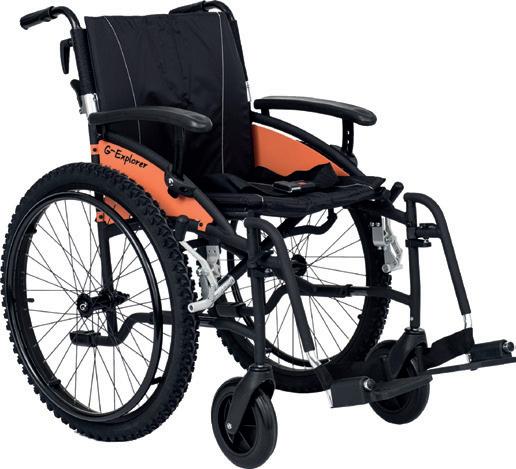OT Overseas Melissa Purkis shares her experience of volunteering as an OT for a school in India
O
n the 31 July 2019 I landed in Chennai, India to be an OT in a school for children with disabilities. I had given myself one week in the busy city of Chennai to aclimatise. In retrospect the words aclimatise and India don’t really go hand in hand. India, I learnt very quickly is a ‘go with the flow’ kind of place where anything can happen. After a long 12-hour train journey, I met the owner and founder of the school (Murugan) who, with his driver, had made a sign with my name on it and found me at the busy train station. We stopped on the way for paneer curry pizza, and three hours later I arrived in the dark at my new home for the next few months. I would be living in a room above Murugan’s family home in the middle of the countryside in the district of Theni, Tamil Nadu. The next day I discussed with Murugan that I would like to observe the children and their teachers in their classes for a week, which he agreed to. However, two days into this he brought over 110 children (one at a time) into his office. With him sat one side of the desk, a child sat next to me and their teachers, parents, carers standing up in a very small, but thank goodness air-conditioned room! They would proceed to list all their issues, whilst the child sat there not being involved, or more often than not, running away! Murugan would translate as much as he could, then I would give advice based on what little I could observe. I ended up bringing fine motor activities into the space so at least the children were kept busy and I could observe more of their skills at the same time. It was overwhelming to say the least. A lot of children were inappropriate for OT input. On reflection setting up a simple referral system would have been really useful, and
would have saved a lot of time. I gave a lot of advice on seating and posture; this however was challenging to rectify as the classrooms only had long steel benches which resulted in lots of poor posture and in turn reduced attention levels. Facilitating eating skills was another obstacle as children (and adults) sat cross legged on the floor to eat their food with their hands. For children with limited core strength and fine motor coordination this proved a very difficult part of their day.
INTERVENTIONS
I attempted to group children into those needing further classroom observations, 1-1 OT sessions and set up a core stability group which was facilitated by my OT assistant and translator Moutopandi. I also organised an upper body strengthening group and we worked on painting a tree mural on one of the blank walls at the school. This proved very successful, with all the children wanting to get involved. The upper body strengthening intervention involved a fine motor skills warm up of ripping paper, screwing it up and dipping it into paint to print onto the walls. The children also helped to carry paint pots and benches to the space as a calming, grounding activity. I also drew dotted lines of the tree branches and got the children to join the dots. I worked closely with the children’s parents who often came in to help their children access their daily school activities. I gave advice on grading and backwards chaining for dressing, and answered various questions. One question I got asked about a lot was sleep, I came to realise swiftly that due to all the family sleeping in one room the standard UK advice on sleep was not relevant.
www.
-magazine.co.uk
45





